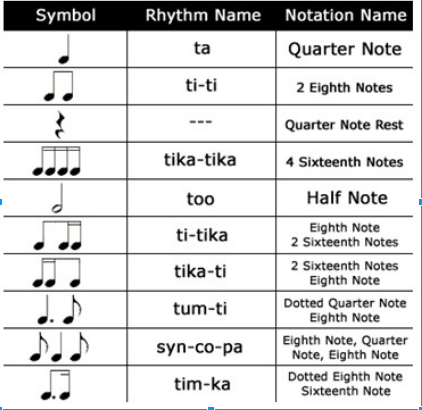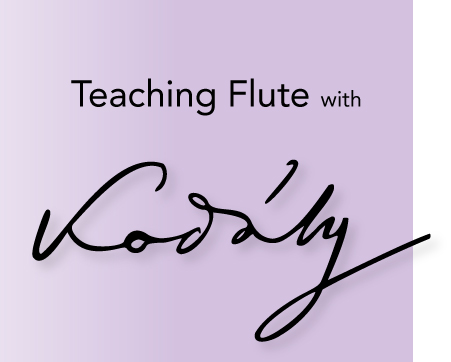Introduction to the series
For the past few years, I’ve taught general music K-5 in the public schools. Every morning my alarm sounds at 5:30 a.m, informing me that I’m 2 hours closer to a ringing bell. I make my coffee and I’m out the door by 7 a.m. From 7:30 a.m. to roughly 2:30 p.m. I am Ms. Dr. Taylor during this time. I teach up to 6 different classes of 25+ students a day.
I love my job, but it is a far cry from the private students that I teach in the afternoons. These students drive to my home studio to study flute. Relatively speaking, I only spend a quarter of the time teaching my flute students compared to my public school students, but it is the most rewarding part of my day.
My public school teaching experience has been the most eye-opening in regards to learning how to teach music skills. There are several methods elementary music teachers use, and I’ll admit I’m not yet an expert in any, but I’ve had to spend an enormous amount of time learning how to be a good general music teacher. The silver lining in all this is that I’m not partial to any one method. I choose to take from Kodály, Orff, and Dalcroze methods according to my tastes and the standards I am required to meet. This exploration of methods has lead to some pretty phenomenal ideas that benefit my private students.
This series of articles, “Teaching Flute with Kodály” is by no means meant to be a comprehensive source for teaching flute, rather a sprinkling of ideas that help enhance what you are already doing. Every article will introduce the concept and an example of how to use it. I might even create a printable resource!
Kodály Rhythm
About Kodály and the method
Zoltán Kodály (1882-1967) was a composer and music pedagogue who believed that all children should be exposed to high quality music. He called on music educators to refine their musical skills to their highest ability so they could properly teach their students. The Kodaly method is one of the most popular general music methods in elementary schools throughout the United States.
From my understanding, the method focuses on developing a child’s voice first. Many of us are familiar with the Curwen hand symbols that have emerged from the Kodály method. Along with Curwen hand symbols, Kodály teachers are typically very organized and sequence their musical skills meticulously, making sure not to identify a musical skill until the child has built the correct foundations first. Pedagogically speaking, a Kodály teacher is very careful in how they present skills; they understand the need for a new skill to be related to a skill already learned.
In my classroom
I find when the students discover skills on their own, they tend to retain the learning. In regards to rhythm, I teach the progressive order:
- Iconic symbols to keep a steady beat (K – 1st)
- Awareness of beat vs rhythm (beat in your feet vs going with the words) (1st grade)
- Small and large iconic symbols to practice going with the words, and to prepare for quarters and eighth notes (1st)
- Long and shorts (1st)
- I have the students create their own long and short patterns with cut straws.
When explaining how we get from long /shorts to actual quarter and eighth notation, I like to use Aileen Miracles’ narrative: “A strong wind blew over the longs and shorts… The shorts needed extra support so we had to put a beam on the top to keep them upright!”
- Finally, “Ta and ti ti” etc. – see image below

In my lesson studio
My beginning flute students certainly use these spoken syllables to practice rhythm. My high school students have typically started playing in middle school band and do not have a standardized way of counting rhythm. They typically revert to the number system (1 and 2 and 3, etc.) albeit poorly.
I have often struggled with how to teach my students rhythm and subdivision. I’ve tried many methods, including ta ka di mi, counting, and also making up words to go along with the rhythm, but nothing seems to universally stick. I think TAKADIMI rhythm solfege system is great, and quite complex, but is better suited for entire band programs where students can practice consistently each day in a group.
It is very difficult to completely “renovate” a band student’s method of counting when you only see them one day a week. About 6 months ago, as an experiment, I started counting flute music using the Kodály system. I found it more intuitive than the TAKADIMI method. It is easier to digest and therefore instantly applicable. Let’s take a look:
Why it works
Similar to TAKADIMI, the rhythm method uses natural syllables that occur in wind articulation. It is easy to vocalize and understand, especially with beginner repertoire that mostly consists of eighth and quarter notes. For rests, I simply whisper “sh.”
Examples of how I’ve used it:
She’ll Be Coming Around the Mountain

Quantz Flute Concerto in G Major
Limitations
The Kodály rhythm counting method is great for a basic understanding of rhythm. The reason I have adopted it is because it inherently shows the rhythm’s duration. However, when addressing meter, you must give more direction. In the next article, we will address how to teach meter with the Kodály method.


[…] out the article about teaching rhythm here. Meter is a tricky skill to teach at any age level. I find most my high school band students do not […]
[…] about the Kodály philosophy at Lenoir Rhyne in Hickory, NC. If you’ve been keeping up with my Teaching Flute with Kodály series, you’ll know that I’ve touched on some basic methodologies from my experience as a […]